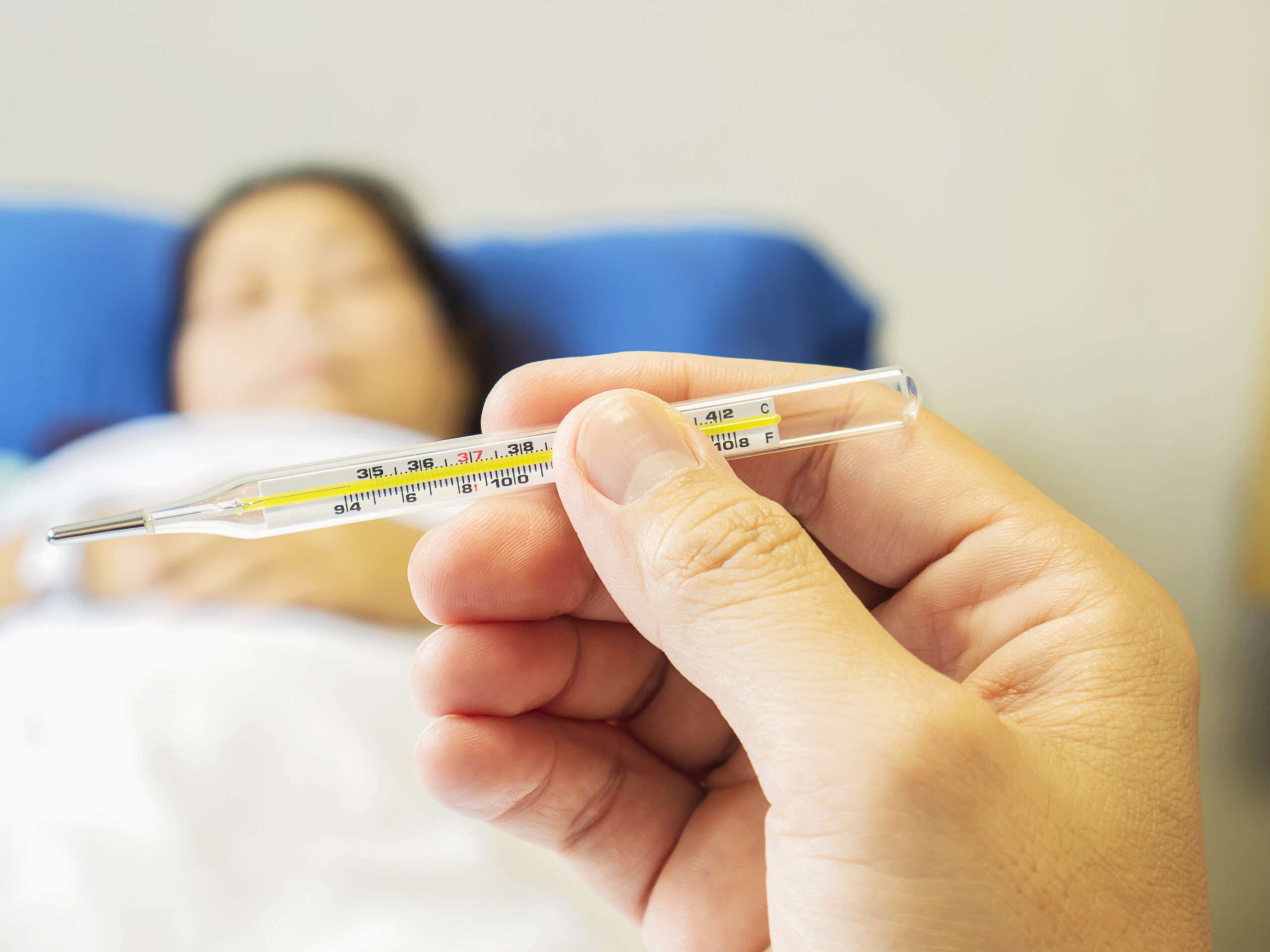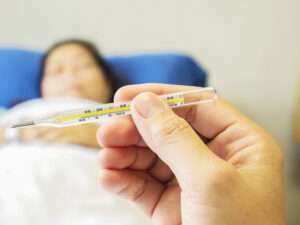The 2 deadly signs of Monkeypox Virus: Are We Prepared?
Introduction
Monkeypox, a viral zoonotic and highly sporadic disease, has recently surfaced as a very important issue for deliberation in global health. The monkeypox virus belongs to the same genus that houses the smallpox virus. It is believed to be the most pathogenic disease of the Ortho-poxvirus non-variola group, and though it is much less lethal than smallpox, it has actually received as much attention as its more famous relative.
The virus was originally isolated in 1958 in laboratory monkeys and takes its name from that first isolation, although it primarily exists among rodents and other small mammals in the wild. The first human case was in 1970 in the Democratic Republic of the Congo as a result of efforts to eliminate smallpox. Except for a few known outbreaks, the virus has generally laid low, geographically speaking within Central and West Africa. However, recent outbreaks in non-endemic regions of Europe, North America, and Asia have further elevated the virus in global public health concerns.
Knowledge of monkeypox is important not only for the impact of the disease in its own right but also because it under-scores the potential dangers posed by zoonotic diseases, in this case, those that spread from animal to human, in a world where human encroachments into wildlife habitats will only increase in the year to come. In this detailed account, every possible feature of monkeypox will be covered, ranging from mode of transmission, symptoms, prevention measures, scenario prevailing in India, and a very detailed FAQ relevant to general questions. Introduction to the Monkeypox Virus Virology Monkeypox is an infection caused by an Ortho-poxvirus genus virus
The monkeypox virus can, hence, be divided into two distinct, well-defined, genetic clades—one related to the Congo Basin of Central Africa, and the other related to West Africa. In general, the Congo Basin clade shows worse clinical manifestations and transmission rates in comparison with the West African MPV clade. Virulence differences apart, it has also been noted that these clades also exhibit differences in their geographical distribution, where the Central African clade is represented in heavier forested habitats of Central Africa and the Western clade in drier habitats of West Africa.
Transmission Pathways
Transmission of Monkeypox could occur through a number of means, including;
1.Animal-to-Human Transmission:
- Direct contact :with blood, body fluids, or cutaneous or mucosal lesions of livestock is a major form of transmission from animals to humans. In endemic areas, it is generally spread by wild animals, mainly rodents and primates, through hunting, cutting, and consumption.
- Bites and scratches: such bites and scratches transfer the virus in addition to body fluids. These are therefore detrimental especially to people living near forests and those places frequented by such animals.
- Inadequately Cooked Meat Bacteria: Infection in a case where the meat is undercooked or inadequately cooked provides a route of infection in a case where such infected meat from animals is eaten. This, therefore, puts more emphasis on food safety practices, which stress its importance, especially in areas where bush meat is widely consumed.
The study was a critique where COVID-19 occurs mainly through respiratory droplets in humans in the heaviest form of its human-to-human transmission that settles out from a large size.
However, the latter typically requires direct interpersonal contacts for an extended period of time and therefore does not transmit as rapidly as some other frequent respiratory viruses, like influenza, or the SARS-CoV-2, which causes COVID. It spreads most easily in close-contact settings, i.e. through households or within healthcare settings where caring for patients is done.
Direct Contact with Lesions or Body Fluids:
Another significant route of transmission is by direct contact with the lesions of a person’s skin or body fluids of the person infected — also done with touching the rash, scabs, or other body fluids of the infected person.
Fomites:
Inanimate objects, especially bedding or clothing, may be the source of monkeypox infection if they have been in contact with the discharges of a patient or an individual with active lesions; these are low-risk entry ways, requiring documentation of their occurrence in healthcare settings or households.
Transplacental or Perinatal Transmission:
Vertical transmission: The disease can be also transmitted vertically: from a mother to her child via the placenta, which results in congenital monkeypox. It simply means that a baby from an infected mother from any time during the pregnancy stands a chance of acquiring the infection and developing the disease, which is very severe at times.
Monkeypox virus symptoms
Typically present with an incubation period of 6-13 days following an individual’s exposure to the virus. However, the period of incubation can extend up to 5-21 days. The disease usually manifests itself in the following stages:
the stage of invasion and skin eruption.
1. Stage of Invasion: 0-5 days The interpretations of the invader phase are: An initial prodrome part of monkeypox as with many other viral infections this phase is difficult to identify without basic laboratory tests.
- Fever: With temperatures normally over 38.5°C (101.3°F), this is one of the first indicators that the patient may develop monkeypox. The fever can be rather high and may persist for days together with other systemic symptoms.
- Headache: Severe headaches feature in the early stages of the illness, adding further to total discomfort.
- Myalgia and Backache: Myalgia and backache are also very common and add to the almost overriding sensation of malaise and exhaustion that is evoked by the invasion stage.
- Lymphadenopathy: Swollen lymph nodes are one of the characteristic differences between monkeypox with regard to smallpox insofar as lymphadenopathy is present. This involves lymphadenopathy in the neck, axillary, or inguinal groups, which are generally tender.
2. Eruptive rash stage (1—3 days after the beginning of the rise of temperature) The eruptive rash stage is the most familiar and diagnostically confirmed stage of monkeypox.
The course of the rash usually occurs with an apparent sequence:
- Rash Onset: The rash begins with the face and can spread to other body parts, involving the palms and soles. It also can include the mucous membranes of the mouth, genitalia, and eyes.
- Lesions progression: below is the general steps of its evolution; Macules: flat discolored lesions and many times it’s the primary. Papules: It is this elevation that makes the elevated form of bumps on the skin more spectacular.
- Vesicles: As the papules elevate further and fill with clear fluid they form vesicles. Pustules: The vesicles progress to pustules when the cloudy fluid that contains pus fills up the space.
- Scabs: The pustules further progress to scabs, a crusting over, which in course of time falls off. Scabs might, at times leave scars.
Other Symptoms: At this stage, some patients also experience respiratory symptoms, end, or a cough, mainly if the virus attacks the respiratory tract. The rash characteristically lasts for 2-4 weeks, after which it forms scabs that fall off, and the patient is no longer contagious.
Severity and Complications
Human illness caused by the monkeypox virus is generally milder than that due to smallpox but in some at-risk groups, morbidity is possible, and mortality has been known to occur. Cases of serious disease were likely associated with variation in the viral strain being due to the Central African versus West African clade.
Complications:
The more serious cases of monkeypox can cause skin infections with secondary bacteria, respiratory difficulty, gastrointestinal symptoms such as vomiting and diarrhea, dehydration, and even sepsis, encephalitis, and blindness from corneal infection. The disease course may get very severe and aggressive in immunocompromised patients, pregnant women, and children.
Mortality Rate:
The case fatality rate is variant and depends on the clade. The Central African clade is more lethal, with a mortality rate of up to 10%-15% in some outbreaks, while the West African clade is less severe; generally, the mortality rates are less than 1% in well-documented cases. However, with appropriate medical care, most of the people recover well without any serious consequences of the disease.
Precautionary measures for Monkeypox virus
Here, sources should be considered in humans and animals to prevent the spread of monkeypox.
Here are prevention methods:
1.Avoid Contacts
- Infected Persons Infected Cases: Avoid close interpersonal contact with the cases. They should be prevented from contact with the skin pustules, body fluids, and fomites of persons with diagnosed cases. This obviously comes with implementation in a health-care setting, so even isolation procedures must be undertaken to avoid causing nosocomial (hospital-acquired) infection.
- Infected Animals: In endemic regions, close contacts with animals must be avoided which are regarded as possible carriers of the virus, like other viruses. One should avoid any direct or indirect contact with wild rodents and primates, handling or consumption of possible bush meat. Those traveling to such places should also be cautious when visiting the areas where monkeypox outbreaks are prone and not endemic to monkeypox.
2. Maintain good hygiene:
- Handwashing : washing hands and using sanitizers helps us to prevent from this virus , wash hands before and after eating food , using toilets.
- Respiratory Hygiene : Covering our mouth and nose while talking ,sneezing can help to prevent the spread of respiratory droplets which are potential transmission route for the monkeypox.
3. Use personal protective equipment:
- Health care workers : Health care workers who are going to attend to patients suspected or confirmed to be suffering from monkeypox should don the standard personal protective equipment that includes gloves, masks, and goggles to the eyes, with gowns. The standard advises on the use of personal protection equipment that is encouraged to be adopted by all health care workers during caring for all patients with activities that involve contact with infectious material.
- General Public: Although primary recommendations for PPE measures are in health care settings, gloves and masks could also be indicated among individuals acting as careers for a home-based patient with monkeypox, especially when handling materials that may be contaminated or in direct care.
4. Vaccination:
- Smallpox Vaccine: A smallpox vaccine is effective, and the same vaccine provides cross-protection against monkeypox. Prior use of the smallpox vaccine is what prevents the spread of monkeypox viruses to human populations in countries of Africa where both diseases were prevalent. Though routine vaccination against smallpox was stopped after the disease was eradicated worldwide in 1980, the vaccine is still available and can provide some protection to those who are exposed to monkeypox.
- Vaccination campaigns : On another recent note, more targeted vaccination campaigns have been used for high-risk groups, such as frontline health workers and laboratory personnel in close contact with ortho-poxviruses, as well as people in close contact with confirmed monkeypox cases. These are conducted not only to halt the outbreak of the virus but also to save those who are at risk from more severe forms of the disease.
5. Public education awareness:
- Public sensitization: It serve the most critical purpose in controlling the spread of monkeypox. The community should be advised accordingly on symptoms, transmission, and the importance of early reporting in terms of controlling outbreaks. Advising the community to avoid contact with wild animals and good hygiene practices is in order.
- Travel advisories: They may be conducted to the public on the dangers and precautions that are to be taken to travel to the regions where the outbreaks have occurred. Travelers are advised to avoid contact with animals, especially those animals in areas where there is history of outbreaks of monkeypox, and seek medical care when symptoms develop. There is no definitive treatment for monkeypox, but basically, the patient is supported and symptoms managed to afford relief to the patient and avoid complications. Rehydration is maintained by using antibiotics to treat secondary bacterial infections, particularly when indicated.
Treatment for monkeypox virus
Management of Monkeypox No agents are currently available that are targeted specifically against monkeypox; all patient care is supportive and symptomatic.
- Supportive care : Support care is the cornerstone of treatment and consists of maintaining hydration, managing pain and fever, and the control of secondary bacterial infections with antibiotics when an infection of this type is suspected.
- Antiviral Drugs: In some cases, experimental drugs designed to fight viruses, including tecovirimat (ST-246), an investigational drug versus smallpox, must be administered under a compassionate use protocol or as part of a clinical trial.
- Vaccine immune Globin (VIG) : VIG is derived from the plasma of individual who is vaccinated against the small pox , which may be used in several cases like if their immune system is weak .
Monkey pox Virus cases in India 2024
Situation as on date: Throughout 2024, the country has reported multiple cases of monkeypox, showing active clustering in locations with high international traffic movement and with large populations. The monkeypox outbreak in India is part of a wider trend, with cases being reported from the zoonotic but non-endemic parts of the world.
The ailment is said to have drawn the attention of the health authorities in India after the initial recognition of the disease through reports of travelers returning to the country from countries having monkeypox outbreaks. There have also been accounts of indigenous human-to-human spread of the disease, which, in one way or another, is somewhat limited in magnitude because of the immediate initiation of public health control measures.
Government Response
The response in India has been multi-pronged: finally, surveillance; isolation and treatment measures; vaccination; and public health education.
Heightened Surveillance: Surveillance at points of entry—especially airports and seaports—was increased. A direction to this effect has been issued to initiate the identification and isolation of suspected cases of monkeypox in all travelers. State health officials have been oriented in the recognition of symptoms of monkeypox and the introduction of relevant quarantine measures whenever necessary.
Outbreak Response: Cases of monkeypox are managed by supportive therapy and, in more severe cases, through advanced care in specialized health care facilities. Confirmed monkeypox cases and infected patients are isolated in specific health facilities to prevent further spread of the virus. Infection treatment method choice depends on disease severity but often includes close patient supervision to watch for any risk of complications as part of supportive care provided .
Contact tracing and monitoring: The symptomless should be traced back to past contact. Vaccination serves as preventive measure. Vaccination campaigns have been carried out in all the high-risk countries, involving health care workers, laboratory staff, and contacts of confirmed cases to mention a few. Indeed, the vaccination campaigns are on the high-risk group to avert an epidemic that might break out. For, the government has come up with several sensitization campaigns for the masses informing them about the life-threatening monkeypox, its signs or symptoms, and how it is contracted. The sensitization campaigns have been broadcast on many media platforms, covering television, radio, social sites, and prints, to reach a wider target audience with information concerning the disease






Post Comment